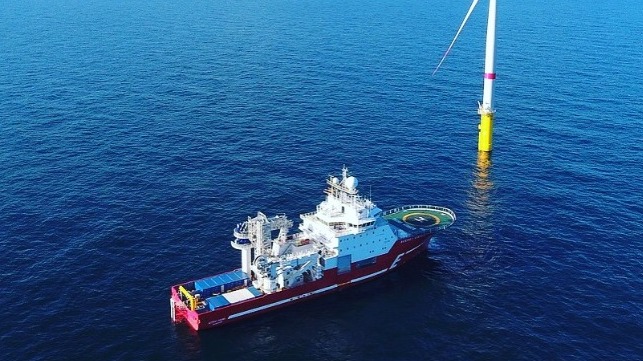Eidesvik Goes All-In on Hybrid, Converting Three Quarters of its Fleet

Norwegian offshore vessel operator Eidesvik says that it is on track to fit hybrid-electric propulsion systems to three quarters of its fleet by the first half of 2022.
Eidesvik has long been a leader in testing and deploying new propulsion technology, and the announcement marks the maturation of its years of work with hybrid systems. It is perhaps best known as the operator of the Viking Lady, an LNG-fueled, house-aft offshore supply vessel that was the world's first commercial ship ever fitted with a fuel cell. In 2012, she also became the first offshore vessel fitted with battery-electric hybrid propulsion.
Over the years, Eidesvik has expanded the number of hybrid-powered vessels in its 16-strong fleet, and it now expects that fully three quarters will be hybrid-equipped by the middle of next year. It recently decided to upgrade the offshore wind vessel Acergy Viking with a battery pack and hybrid system, and the conversion of the 14-year-old vessel will be completed in Q1 2022. With hybrid propulsion, the ship should reduce her consumption of MGO by up to 350 tonnes per year, which translates into a reduction in CO2 emissions of more than 1,000 tonnes per year.
Earlier this year, Acergy Viking renewed her offshore wind support contract with Siemens Gamesa until 2027. Eidesvik says that Siemens Gamesa and Enova - Norway's energy innovation fund - provided support for the hybrid conversion.

that matters most
Get the latest maritime news delivered to your inbox daily.
"At an early stage, hybrid solutions were mainly installed on board our supply vessels, but Eidesvik was also early with similar environmental upgrades on several of our subsea vessels. We are now particularly pleased to introduce hybrid propulsion also on one of our vessels with assignments within offshore wind and renewable energy,” said Jan Fredrik Meling, the CEO of Eidesvik Offshore.
Eidesvik’s ultimate ambition is to reduce its fleet’s emissions by 50 percent by 2030 and to operate emission-free by 2050, in line with the Paris Agreement.
